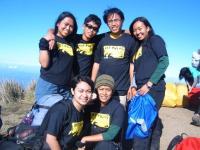
As it is situated in the earthquake belt of the Pacific, the country is rocked fromtime to time by seismic tremors and volcanic eruptions. The Philippine Fault, the biggestof its seismic faults, runs from Luzon to Mindanao. Of the more than a hundredvolcanoes in the country, 22 are said to be active. The most famous of these volcanoesare Mount Mayon in Bicol, which is known for its perfect symmetry; Taal Volcano,situated at the center of Taal Lake and reputed to be the smallest volcano on earth; andMount Pinatubo whose eruption in 1991 is deemed as the world’s worst volcaniceruption of the 20th century. It left more than one million Filipinos homeless, and itsfumes affected the weather and the ozone layer throughout the world.
The country has rich deposits of gold, silver, copper, and many other expensive metals and minerals. It has the biggest deposit of chromite, the largest deposit of nickel and one of the richest undeveloped iron ore deposits in the world. Gold, silver and other precious stones have been found all over the country in enormous amounts. The Philippine climate is one of the best tropical climates in the world. In fact, it is one place on earth where flowers bloom all year round. There are only two seasons, the dry and the wet. March to June is the dry season. It is humid but tolerable. The average daytime temperature is at 30 to 35 degrees centigrade. The wet season is from June to October. Strong winds and heavy rains visit the islands of the Philippines during this season. Being situated close to the typhoon belt, preparing for the strong wind, rain, and floods has become a way of life during the wet season. If rain is a blessing, the Philippines is one of the most blessed countries. It hold the world s record for the heaviest 24- hour rainfall of 979 millimeters experienced in Manila on October 17, 1967.













No comments:
Post a Comment